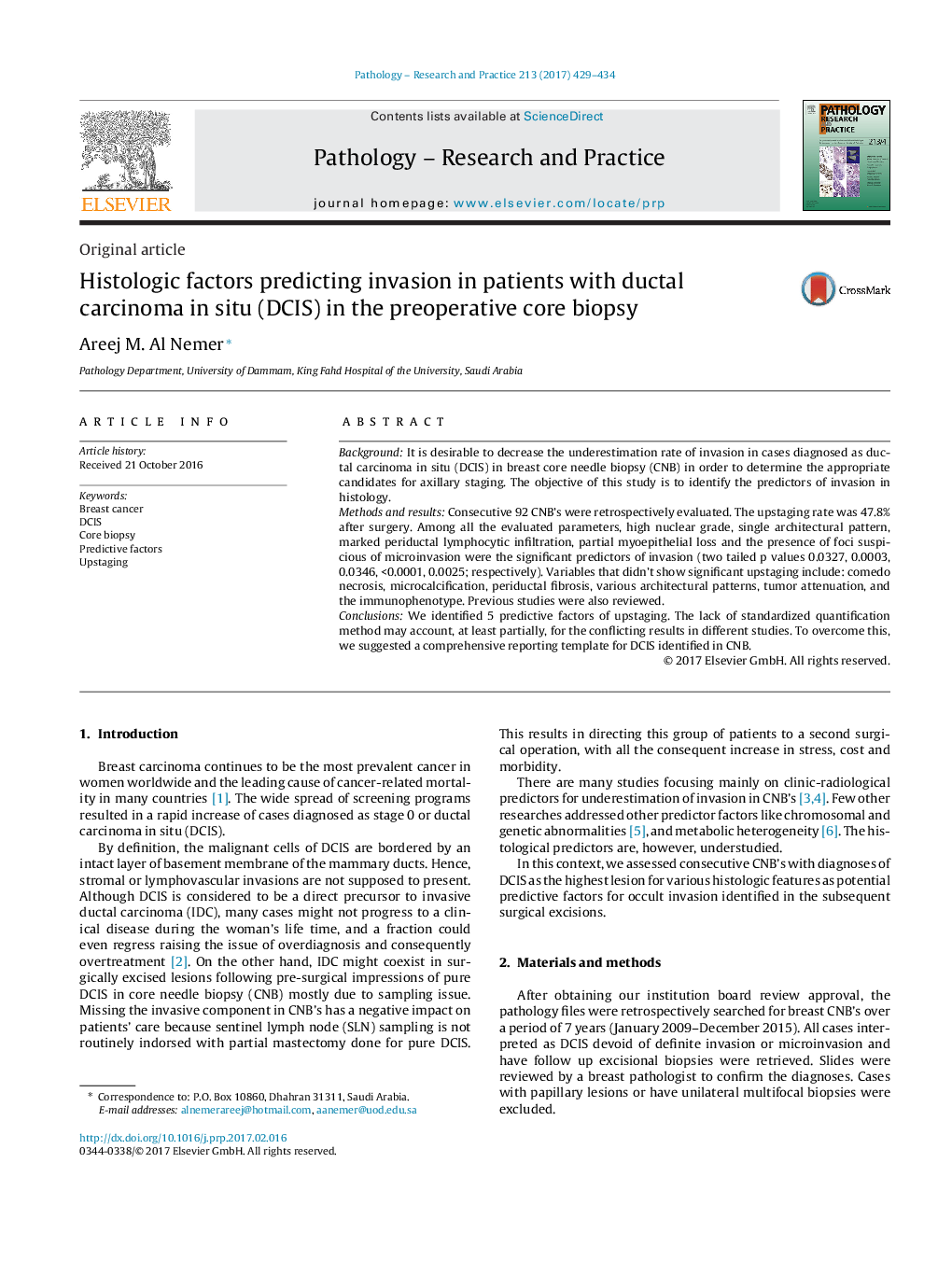| Article ID | Journal | Published Year | Pages | File Type |
|---|---|---|---|---|
| 5529205 | Pathology - Research and Practice | 2017 | 6 Pages |
â¢With core needle biopsy, there is always a chance of missing the invasive component of breast cancer.â¢This has negative influence in surgical care, as pure in situ carcinoma doesn't necessitate axillary staging.â¢The predictive factors of occult invasion in biopsy are not yet definite.â¢This study was the first to analyze this number of potential predictive factors in breast biopsies for upstaging after excisions.â¢Due to the disputing outcomes of various studies, we suggested a comprehensive template for reporting DCIS in core biopsies.
BackgroundIt is desirable to decrease the underestimation rate of invasion in cases diagnosed as ductal carcinoma in situ (DCIS) in breast core needle biopsy (CNB) in order to determine the appropriate candidates for axillary staging. The objective of this study is to identify the predictors of invasion in histology.Methods and resultsConsecutive 92 CNB's were retrospectively evaluated. The upstaging rate was 47.8% after surgery. Among all the evaluated parameters, high nuclear grade, single architectural pattern, marked periductal lymphocytic infiltration, partial myoepithelial loss and the presence of foci suspicious of microinvasion were the significant predictors of invasion (two tailed p values 0.0327, 0.0003, 0.0346, <0.0001, 0.0025; respectively). Variables that didn't show significant upstaging include: comedo necrosis, microcalcification, periductal fibrosis, various architectural patterns, tumor attenuation, and the immunophenotype. Previous studies were also reviewed.ConclusionsWe identified 5 predictive factors of upstaging. The lack of standardized quantification method may account, at least partially, for the conflicting results in different studies. To overcome this, we suggested a comprehensive reporting template for DCIS identified in CNB.
